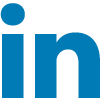David Ricciardelli
December 20, 2023
Money Economy Commentary2024
In 2023 markets focused on a recession that never was, a very concentrated rally of AI beneficiaries, a 10% drawdown from the July highs, and economic data that was ‘not too cold, and not too warm, but just right’ to inspire a pause in rate hikes, less hawkish central bank commentary, and a rocking yearend rally.
While we don’t make forecasts or try to predict short term market gyrations, we have put together a small collection of charts to try to help put this market in context. Off we go …
How narrow was the market? About 25% of companies in the S&500 outperformed the index in 2023. The narrowest market we’ve seen in 30+ years. We’d also highlight that bull markets over the last forty-years have ended with much better breath than we see today – only 24% of the S&P500 trades within 10% of an all-time high, vs 29% on average, and a much higher proportion at previous peaks.

In the last fifty years, the S&P500 has only outperformed the S&P500 equal weighted index by more than 10% on two occasions: 1998 (+16.4%) and 2023 (+13.9% YTD).

The data set is too small to draw conclusions, but smaller capitalization stocks did well in the 2000s, and small caps tend to perform well when the yield curve is steepening.

Could it be 1982? In 1982, the S&P500 troughed in August, Volker declared “victory” over inflation in October, and the market rallied +19% in 37 trading days. In 2023, the S&P500 troughed in October, Powell implied “victory’ over inflation in December, and the market rallied +14% in 33 trading days. The chart below shows the continued strength of the S&P500 through 1982/83.

It is an Election Year. While this presidential cycle has been a wild one for markets, we’re right back at the average as we enter Year Four. Election Years have generally provided a constructive back drop for equity markets.

Where Might There be Opportunities?
There is more than $7tn dollars on the sidelines in money market funds. If real returns (returns higher than inflation) for cash equivalent securities become negative or absolute returns on cash start to trend lower, some of the those money market balances should find their way into asset classes with higher return potential.

The valuation of high dividend payers has averaged a 13% discount to S&P500 since the 1980s. Even with our yearend rally, high dividend payers are at a 26% discount to the market. A level that we’ve only seen during the Tech Wreck in 2000.

International markets look relatively inexpensive when compared to US and UK markets.

What Could Break?
Economic data has been very accommodating with labor, inflation, and a host of other indicators printing in a very narrow band that is weak enough to inspire central bankers to more dovish tones but still strong enough to keep hopes of soft landing alive. It’s likely we’ll get some economic data outside this range in 2024 and markets will become choppy. Even if nothing ‘breaks’ in 2024, the market will likely give us buying opportunities throughout the year. Since 1928, the average intra-year decline for the S&P500 is 16%!

It’s rare that markets get derailed by topic that are already in dominating headlines. Here is quick look at where ‘headline’ risk lies today:
- US commercial real estate.
- The US Election.
- Europe’s economy.
- China’s economy.
- US fiscal situation (too much government debt).
- US housing/apartment sectors.
- Ukraine/Israeli war escalates.
- Houthi rebels impacting shipping lanes through the Red Sea.
The future always holds surprises but we currently have a pretty large waterfront of worry in our collective consciousness.
While geopolitical conflict takes a terrible toll on individuals and communities, they have a much less significant impact on risk assets.

What’s an investor to do?
The key to 2023 was to stay invested!
Wading through a sea of conflicting data points is common in investing. As a result, we recommend investors save and invest consistently across market cycles. This will allow an investor to buying more securities when the market is inexpensive and fewer securities when the market is expensive. Most importantly, an investor can avoid the need to make ‘hero’ calls on market timing.
We continue to recommend a barbell strategy where high-quality companies exposed to secular themes provide exposure to equity markets. The other side of the barbell is: cash, actively managed fixed income, and alternative investments that reduce volatility and provide ballast for portfolios. For investors in the distribution phase of their lives, the focus expands to optimize the tax efficiency of distributions.
Please contact me for a more detailed discussion.
Delli (delli@cibc.com)
Disclaimers:
This information, including any opinion, is based on various sources believed to be reliable, but its accuracy cannot be guaranteed and is subject to change. CIBC and CIBC World Markets Inc., their affiliates, directors, officers, and employees may buy, sell, or hold a position in securities of a company mentioned herein, its affiliates or subsidiaries, and may also perform financial advisory services, investment banking or other services for, or have lending or other credit relationships with the same. CIBC World Markets Inc. and its representatives will receive sales commissions and a spread between the bid and ask prices if you purchase, sell, or hold the securities referred to above. © CIBC World Markets Inc. 2023.
Commissions, trailing commissions, management fees, and expenses may all be associated with hedge fund investments. Hedge funds may be sold by Prospectus to the general public, but more often are sold by Offering Memorandum to those investors who meet certain eligibility or minimum purchase requirements. An Offering Memorandum is not required in some jurisdictions. The Prospectus or Offering Memorandum contains important information about hedge funds - you should obtain a copy and read it before making an investment decision. Hedge funds are not guaranteed. Their value changes frequently, and past performance may not be repeated. Hedge funds are for sophisticated investors only.
If you are currently a CIBC Wood Gundy client, please contact your Investment Advisor.




